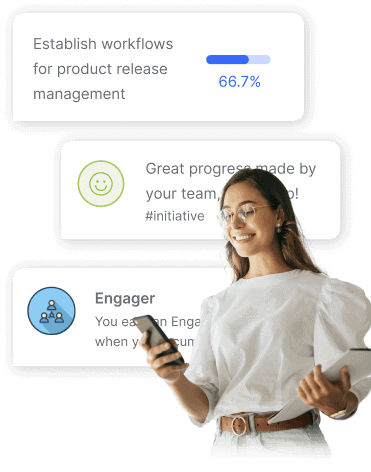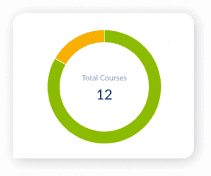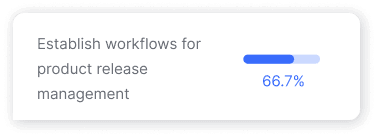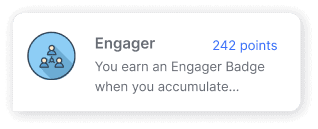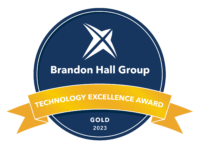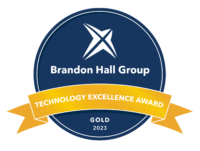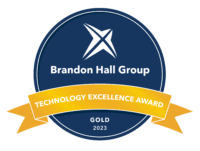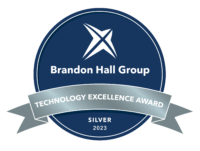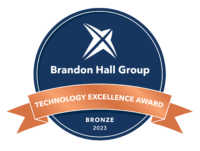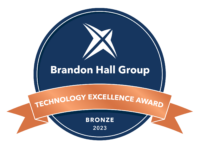The global workplace is changing at an unprecedented pace, driven by technological advancements, evolving market dynamics, and a shift in the very nature of work. In this dynamic landscape, organizations face the dual challenge of staying competitive and ensuring their workforce remains equipped with the skills needed to navigate this complex terrain. As we stand on the edge of the Fourth Industrial Revolution, the traditional work paradigms are being reshaped by automation, artificial intelligence, and the gig economy.
In this era of profound transformation, the need for a skilled, adaptable, and continuously learning workforce has never been more critical. Organizations are no longer just competing within their industry; they are navigating a global marketplace where innovation and agility are paramount. Enter Learning & Development for employees, a crucial catalyst for organizational growth and individual success.
In this guide, we will discuss how Learning & Development for employees serves as a dynamic framework that addresses the immediate skills gap and cultivates a culture of continuous learning, resilience, and adaptability.
A. Definition of Employee Learning & Development
Learning and development for employees refers to a systematic and strategic approach taken by organizations to enhance the knowledge, skills, and capabilities of their workforce. It encompasses a variety of activities designed to empower employees with the tools they need to excel in their current roles and prepare for future challenges.
L&D goes beyond traditional training programs and fosters a culture of continuous learning. It involves formal classroom settings and informal learning opportunities, such as on-the-job experiences, mentorship, and self-directed learning.
Essentially, it’s about creating an environment that encourages employees to acquire new skills, update existing ones, and stay abreast of industry trends.
B. Importance of L&D in the Workplace
The significance of learning and development in the workplace cannot be overstated. It is a key driver of organizational success, employee satisfaction, and overall productivity.
Here are some compelling reasons why L&D should be a priority for any forward-thinking company:
- Employee Empowerment: L&D empowers employees by providing them with the knowledge and skills necessary to perform their jobs effectively. This empowerment boosts individual confidence and contributes to a more capable workforce.
- Adaptability and Innovation: Adaptability is paramount in today’s rapidly evolving business landscape. L&D equips employees with the ability to adapt to changes, embrace innovation, and contribute to the organization’s growth by staying ahead of industry trends.
- Retention and Engagement: Investing in employees’ professional growth through L&D programs fosters a sense of value and belonging. Engaged employees are more likely to stay with a company, reducing turnover and recruitment costs.
- Enhanced Performance: A well-structured L&D program directly correlates with improved job performance. Employees who continually enhance their skills are better equipped to meet job requirements and contribute to the organization’s overall success.
- Competitive Edge: Organizations that prioritize L&D gain a competitive edge in the market. A skilled and knowledgeable workforce enables a company to innovate, adapt to market changes, and outperform competitors.
II. The Fundamentals of Learning & Development
Learning and development is a vast arena, encompassing various objectives like skill enhancement, career growth, and fostering adaptability, which are crucial for both individual and organizational success.
A. Key Objectives of L&D
Learning and development programs play a crucial role in shaping employees’ professional growth and success. The key objectives of L&D go beyond mere skill acquisition; they encompass the holistic development of individuals within the organizational context.
- Skill Enhancement:
L&D aims to equip employees with the necessary skills and knowledge to excel in their current roles. Whether mastering technical skills, improving soft skills, or acquiring industry-specific knowledge, a well-designed L&D program ensures continuous skill enhancement.
- Career Advancement:
Providing opportunities for career growth is a fundamental objective of L&D. By offering avenues for employees to develop new competencies and expertise, organizations empower their workforce to take on higher responsibilities and advance within the company.
- Adaptability and Resilience:
L&D programs focus on cultivating a culture of continuous learning, fostering resilience, and enabling employees to thrive in dynamic environments.
- Leadership Development:
L&D is instrumental in identifying and nurturing leadership potential within the organization. Leadership development initiatives help employees build the skills required to assume managerial roles, fostering a pipeline of capable leaders.
B. The Role of L&D in Employee Engagement and Retention
Employee engagement and retention are intricately linked to the effectiveness of learning and development initiatives. A robust L&D strategy contributes significantly to creating a positive work environment and cultivating a sense of loyalty among employees.
- Increased Job Satisfaction:
Employees who feel supported in their professional growth are more likely to be satisfied with their jobs. L&D programs demonstrate a commitment to the well-being of employees, leading to increased job satisfaction and a positive workplace culture.
- Talent Attraction and Retention:
A well-established L&D framework becomes a powerful tool for attracting top talent. Prospective employees seek organizations that invest in their development. Additionally, current employees are more likely to stay with a company that offers continuous learning opportunities.
- Employee Empowerment:
L&D empowers employees by giving them the tools to control their career paths. When individuals see that their development is a priority for the organization, they are more engaged and committed to contributing their best to the company’s success.
- Building a Learning Culture:
Integrating learning into the organizational culture fosters an environment where curiosity and innovation thrive. Employees are encouraged to seek out new knowledge, share insights, and collaborate, contributing to a workplace where continuous learning is celebrated.
III. Assessing Employee Learning Needs
Assessing and understanding the learning needs of your workforce is the crucial first step in creating effective learning & development programs. This section explores the key components of this process:
A. Conducting a Training Needs Analysis (TNA)
A Training Needs Analysis (TNA) is the compass that guides your organization toward effective learning initiatives. Here’s how to navigate this critical step:
- Gather Stakeholder Input:
Involve key stakeholders, including department heads, team leaders, and employees, to gain diverse perspectives on the organization’s needs. Their insights are invaluable for a holistic understanding of the skills required for success.
- Review Performance Data:
Analyze performance metrics, project outcomes, and employee feedback to identify patterns and trends. This data-driven approach provides an objective foundation for pinpointing areas that require improvement.
- Skill and Competency Mapping:
Create a comprehensive inventory of existing skills and competencies within the organization. This map serves as a baseline to identify gaps and prioritize areas for development.
B. Identifying Skill Gaps and Areas for Improvement
Once the TNA is complete, the focus shifts to identifying specific skill gaps and areas that need improvement:
- Skill Gap Analysis:
Compare the existing skills inventory with those required for current roles and future organizational goals. This analysis reveals the gaps that need to be addressed through targeted learning initiatives.
- Feedback Mechanisms:
Establish channels for continuous feedback from employees regarding their perceived skill gaps. Employees often have valuable insights into their own professional development needs, creating a more inclusive and employee-centric approach.
- Future-Proofing Skills:
Anticipate future industry trends and technological advancements to identify skills that will be crucial for the organization’s success. This forward-thinking approach ensures your workforce is equipped for upcoming challenges.
C. Considering Individual and Organizational Goals
While addressing organizational needs is paramount, individual and organizational goals must align for a successful L&D strategy:
- Individual Development Plans:
Encourage employees to actively participate in shaping their development plans. Align these plans with both personal career aspirations and broader organizational objectives.
- Strategic Alignment:
Ensure that the identified learning needs align with the organization’s overall strategic goals. This synergy guarantees that L&D initiatives contribute directly to the company’s success.
- Customized Learning Paths:
Recognize the diverse needs of employees and offer personalized learning paths. Tailoring programs to individual preferences fosters engagement and enhances the effectiveness of the development journey.
IV. Designing an Effective Learning & Development Program
Designing a learning and development program entails the following key phases:
A. Establishing Clear Learning Objectives
Clear learning objectives are the foundation for any successful learning & development program. These objectives define what employees are expected to learn and achieve. Here’s how to establish clear learning objectives:
Align with Organizational Goals:
- Ensure that the learning objectives align with the overall goals and vision of the organization.
- Identify specific skills and competencies that contribute to the success of both the individual and the company.
Use SMART Criteria:
- Make objectives Specific, Measurable, Achievable, Relevant, and Time-bound (SMART).
- Clearly articulate what employees should know or be able to do after completing the program.
Prioritize Critical Skills:
- Identify and prioritize critical skills that directly impact job performance.
- Focus on technical and soft skills that contribute to personal and professional growth.
B. Choosing Appropriate Training Methods
Selecting the right training methods is crucial for the effectiveness of your L&D program. Consider the diverse needs and preferences of your employees when choosing from various methods:
Workshops and Seminars:
- Ideal for interactive learning and group participation.
- Facilitate hands-on experiences and allow for real-time feedback.
E-learning and Online Courses:
- Provide flexibility for employees to learn at their own pace.
- Utilize multimedia elements, quizzes, and discussion forums to enhance engagement.
On-the-Job Training:
- Incorporate practical, on-the-job experiences to reinforce learning.
- Pair employees with mentors or coaches to facilitate skill transfer.
Simulations and Role-Playing:
- Offer a safe environment for employees to practice skills.
- Simulate real-world scenarios to enhance decision-making and problem-solving.
Peer Learning and Collaboration:
- Foster a culture of knowledge sharing among employees.
- Encourage collaborative projects and group activities to promote teamwork.
C. Incorporating Various Learning Styles and Preferences
Recognizing and accommodating diverse learning styles ensures that your L&D program caters to the preferences of a varied workforce:
Visual Learners:
- Include infographics, charts, and videos to convey information visually.
- Utilize diagrams and mind maps to help visualize concepts.
Auditory Learners:
- Provide recorded lectures, podcasts, or audio-based content.
- Encourage group discussions and verbal communication.
Kinesthetic Learners:
- Incorporate hands-on activities and practical demonstrations.
- Use role-playing or interactive simulations to engage tactile learners.
Read/Write Learners:
- Offer written materials, manuals, and articles for those who prefer reading.
- Encourage note-taking and written reflections during training sessions.
Adaptive Learning Platforms:
- Implement adaptive learning technologies that personalize content based on individual learning styles.
- Use assessments to identify and cater to unique preferences.
V. Implementing Learning & Development Initiatives
The implementation of L&D initiatives happens in the following phases:
A. Creating a Supportive Learning Culture
Building a workplace culture that nurtures continuous learning is integral to the success of any learning & development initiative. A supportive learning culture fosters an environment where employees feel encouraged to acquire new skills and knowledge.
Here’s how you can create such a culture:
Leadership Involvement:
- Demonstrate commitment from the top. When leaders actively engage in learning, it sets a positive example for the entire organization.
- Encourage leaders to share their learning experiences and emphasize the importance of ongoing development.
Promoting Open Communication:
- Foster an atmosphere where employees feel comfortable discussing their learning needs and aspirations.
- Establish regular channels for feedback to understand what is working well and identify areas for improvement in the learning process.
Recognition and Rewards:
- Acknowledge and celebrate employees who actively participate in learning initiatives.
- Tie learning achievements to performance evaluations and career progression, emphasizing the value of continuous development.
Accessible Learning Resources:
- Ensure that learning materials and resources are readily available and easily accessible to all employees.
- Implement a user-friendly Learning Management System (LMS) to facilitate seamless navigation and participation in training programs.
B. Communication Strategies for L&D Programs
Effective communication is key to the success of any L&D program. Clear and consistent messaging helps engage employees and garner their support for learning initiatives. Consider the following communication strategies:
Transparent Communication:
- Clearly articulate the goals and objectives of the L&D programs. Transparency builds employee trust and emphasizes the organization’s commitment to their development.
Multi-Channel Approach:
- Utilize various communication channels such as emails, newsletters, intranet, and team meetings to reach a diverse audience.
- Leverage social media and internal collaboration tools to create a buzz around upcoming training sessions and success stories.
Customized Messages:
- Tailor communication to different audience segments. Highlight how the learning opportunities align with individual and team goals.
- Emphasize the practical benefits of the training, showcasing how it contributes to personal and professional growth.
Feedback Loops:
- Establish mechanisms for two-way communication. Encourage employees to provide feedback on the effectiveness of the communication strategy and the impact of the training.
- Use feedback to refine communication approaches and address any concerns or misconceptions.
C. Overcoming Resistance to Change
Resistance to change is a common challenge when implementing L&D initiatives. To successfully navigate this resistance, consider the following strategies:
Transparent Communication:
- Clearly communicate the reasons behind the change, emphasizing the positive impact on individual and organizational growth.
- Address concerns proactively, demonstrating an understanding of potential challenges and a commitment to providing necessary support.
Inclusive Decision-Making:
- Involve employees in the decision-making process related to learning initiatives. Solicit their input and incorporate their feedback to create a sense of ownership and inclusion.
Change Champions:
- Identify and empower change champions within the organization. These individuals can play a crucial role in influencing their peers and promoting a positive attitude towards learning.
Gradual Implementation:
- Introduce changes incrementally rather than making sweeping transformations. This allows employees to adapt gradually, reducing the shock of sudden change.
Continuous Support:
- Provide ongoing support through coaching, mentorship, and additional resources. Ensure employees have the assistance they need to overcome challenges and fully embrace the learning journey.
VI. Measuring the Impact of Learning & Development
A. Key Performance Indicators (KPIs) for L&D
Measuring the impact of learning & development initiatives is crucial for ensuring their effectiveness. Key Performance Indicators (KPIs) serve as valuable metrics to gauge the success of L&D programs. Here are some essential KPIs to consider:
Employee Engagement Rates:
- Monitor levels of participation and engagement in training activities.
- Assess how well employees are embracing and actively participating in learning opportunities.
Skill Acquisition and Application:
- Evaluate the extent to which employees have acquired and applied new skills.
- Track the integration of learned skills into daily tasks and projects.
Training Completion Rates:
- Measure the percentage of employees who successfully complete the training programs.
- Identify any drop-off points in the training process for optimization.
Knowledge Retention:
- Assess how well employees retain information from training sessions.
- Utilize quizzes and assessments to measure knowledge retention over time.
Time to Competency:
- Determine the time it takes for employees to reach a desired level of competency.
- Evaluate the efficiency of the learning process and identify areas for acceleration.
B. Conducting Post-Training Evaluations
Post-training evaluations play a pivotal role in understanding the immediate impact of L&D initiatives and gathering valuable insights for improvement. Here’s a structured approach to conducting effective post-training evaluations:
Participant Feedback:
- Gather feedback directly from participants regarding the training content, delivery, and relevance.
- Use surveys or feedback forms to collect qualitative data on their learning experience.
Assessment of Learning Objectives:
- Evaluate the achievement of predefined learning objectives.
- Identify areas where the training excelled and pinpoint aspects that may need refinement.
Application of Knowledge:
- Assess how well participants can apply the newly acquired knowledge and skills in real-world scenarios.
- Encourage self-reflection on the practical implications of the training.
Trainer Effectiveness:
- Evaluate the effectiveness of trainers or facilitators.
- Solicit feedback on their communication style, engagement, and ability to address participant queries.
Post-Training Performance Metrics:
- Compare pre-training and post-training performance metrics to measure tangible improvements.
- Analyze any correlations between training outcomes and on-the-job performance.
C. Continuous Improvement in L&D Programs
Continuous improvement is the backbone of successful L&D programs. To enhance the effectiveness of your initiatives, consider the following strategies:
Feedback Analysis:
- Systematically analyze participant feedback and identify recurring themes.
- Use constructive criticism to make informed adjustments to content, delivery methods, or resources.
Benchmarking Against Industry Standards:
- Compare your L&D programs against industry benchmarks and best practices.
- Stay informed about evolving trends and technologies in the L&D space.
Iterative Content Updates:
- Regularly update training content to reflect changes in industry standards or organizational goals.
- Keep materials fresh, relevant, and aligned with the evolving needs of the workforce.
Technology Integration:
- Leverage learning technologies to gather real-time data on participant engagement and progress.
- Explore innovative tools to enhance the overall learning experience.
Collaborative Learning Communities:
- Foster a culture of collaboration and knowledge-sharing among employees.
- Encourage the creation of forums, discussion groups, or mentorship programs to support ongoing learning.
By actively monitoring KPIs, conducting thorough post-training evaluations, and committing to continuous improvement, organizations can ensure that their Learning & Development initiatives meet and exceed the expectations of employees and the business.
VII. Technological Advancements in Employee Learning & Development
Technology plays a pivotal role in shaping effective learning & development strategies by creating an immersive and personalized employee experience. Organizations are increasingly turning to innovative tools and platforms to enhance the learning experience for their employees.
Leveraging E-learning Platforms and Tools:
Embracing the flexibility of online learning, E-learning platforms have become a cornerstone of modern L&D initiatives. These platforms offer diverse courses, from technical skills to soft skills, accessible at any time and from anywhere. E-learning platforms provide several benefits over traditional learning methods:
- Flexibility: Employees can learn independently, accommodating diverse learning styles.
- Cost-Effectiveness: Reduces the need for traditional classroom training, saving both time and resources.
- Scalability: Ideal for organizations with a dispersed workforce, ensuring consistent training globally.
Virtual and Augmented Reality (VR/AR) in Learning:
Virtual and Augmented Reality are gaining prominence in employee learning and development as technology advances. By incorporating immersive experiences, VR and AR redefine traditional training methods. Key advantages include:
- Realistic Simulations: VR/AR enables lifelike simulations, allowing employees to practice and refine skills in a controlled environment.
- Engagement: The interactive nature of VR/AR fosters higher engagement levels, leading to improved retention of information.
- Hands-On Learning: Employees can gain practical experience in a risk-free virtual setting, enhancing their confidence and competence.
Integrating Gamification into Learning:
Gamification is another innovative approach to transforming the learning landscape. Organizations can enhance motivation and participation by incorporating game elements into training programs. Key benefits include:
- Increased Engagement: Gamification makes learning more enjoyable, increasing employee engagement and motivation.
- Competition and Collaboration: Game-based learning introduces healthy competition and encourages collaboration, fostering a sense of achievement.
- Instant Feedback: Immediate feedback in a game setting allows employees to track their progress and address learning gaps effectively.
VIII. Conclusion
In summary, navigating employee learning and development in the digital age demands a strategic, tech-savvy approach. Embracing technology, fostering a culture of continuous learning, and utilizing innovative tools are key. Prioritizing ongoing professional growth enhances competitiveness and equips the workforce to thrive in the evolving digital landscape. The journey of learning and development is ongoing, and in the digital era, it is the foundation for excellence and innovation.
Subscribe To The Engagedly Newsletter


